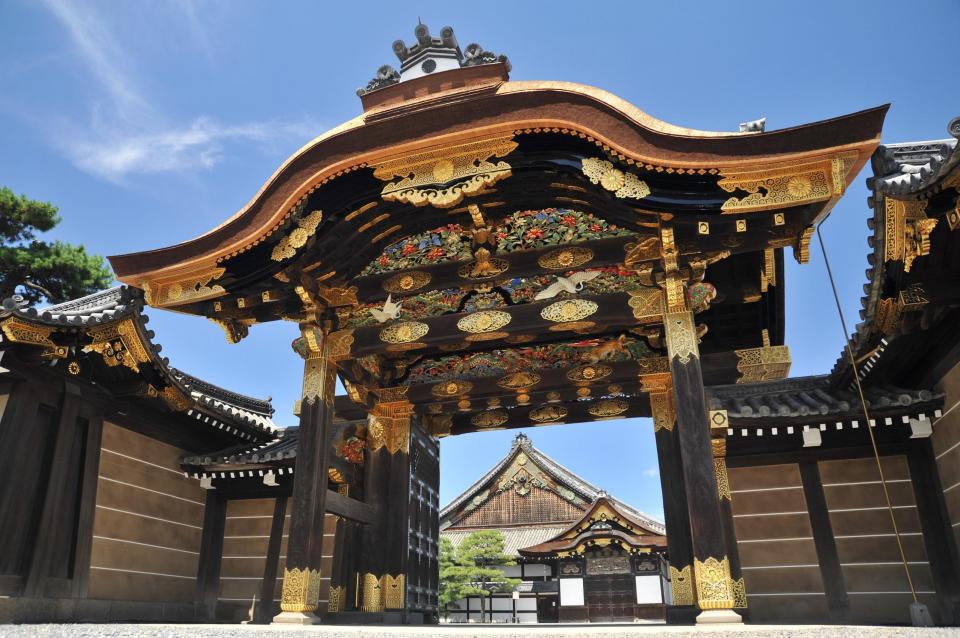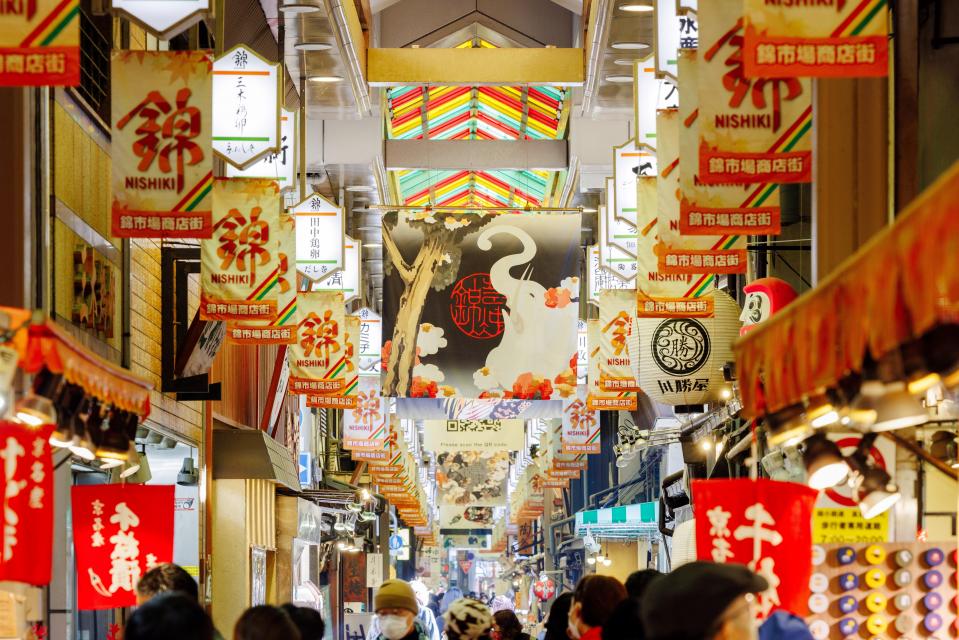The grid pattern geography of Kyoto city was laid out on the model of Chang’an, which was the capital of China’s Tang dynasty. Nowadays, the center of Kyoto is a place where you can feel the new and old Kyoto at the same time. You can enjoy shopping and dining at Nishiki market and Shijo area, feel the old history of Kyoto at Nijo castle, Kyoto Imperial Palace, and learn and experience the traditional culture of Kyoto.
The city's largest shopping district along Shijo Street, between Kawaramachi to Karasuma street, high end brand shops and department stores stands along.
At night, it has the face of a night spot where young people gather, and at the same time, maiko and geiko can be seen walking in Kyoto's Hanamachi districts such as Ponto-cho and Gion.
Sights
●
Nijo-jo castle
Nijo castle was built in 1603 by order of Tokugawa Ieyasu, the founder and first Shogun of the Tokugawa Shogunate (1603-1867). Not only the architect and the history, but the art of the castle is also a must see point. Many of the wall paintings of the Ninomaru-goten palace were painted during the major renovation during 1624-26. 1016 of these paintings are designated as Important Cultural Properties, so please take a look at the murals and the wooden transom in each room too. It is also famous as the place where the end of Tokugawa rule, and the returning of political control to the Emperor was announced.
https://nijo-jocastle.city.kyoto.lg.jp/?lang=en
●Kyoto Gyoen National Garden
Kyoto Gyoen was the garden of the Imperial palace and the residential area for the court nobles in the Edo period. Historical places, such as Kyoto Imperial Palace, still stand on this ground which is 0.7km from east to west, and 1.3km from north to south.
It is open to everyone anytime, and it is also famous for plum, peach, cherry blossom trees, and also the autumn leaves.
●Nishiki Market
Nishiki market is a shopping arcade which has 400 years of history. This 390 meter long market has more than 100 shops, so you can enjoy a lot of variety foods, vegetables and souvenirs. Some shops are traditional and others are the newest! In addition, since the birthplace of Ito Jakuchu, the leading Edo Period painter in the 18th century, used to be a vegetable vendor in the Nishiki market, visitors can enjoy his paintings on the shutters during the hours after the stores are closed.
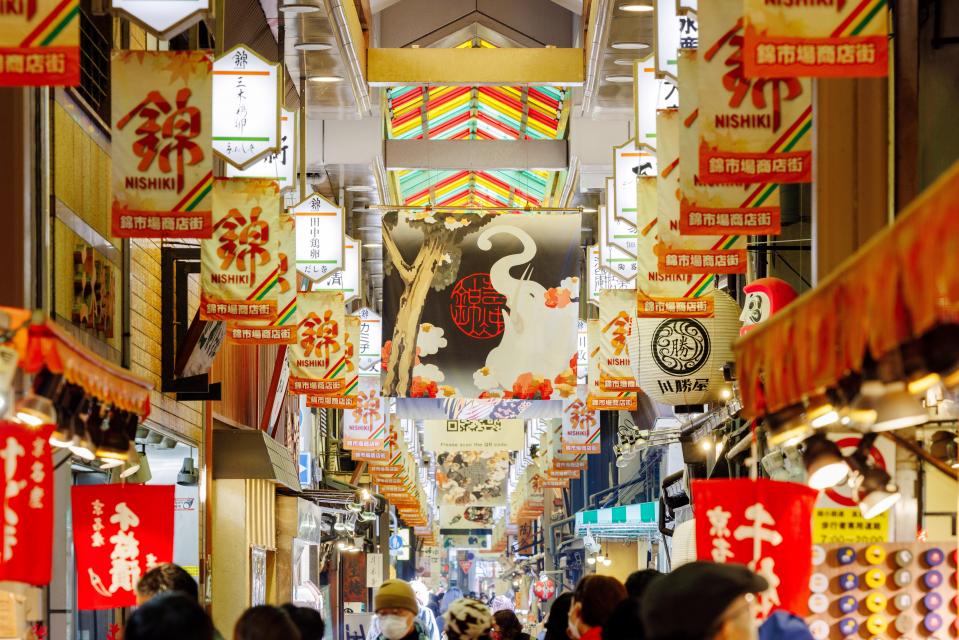
●Pontocho
Ponto-cho, located between Kamo River and Kiyamachi street, is one of Kyoto's Hanamachi, where training halls for gei-maiko, teahouses are located. The alley has restaurants on both sides from restaurants where locals gather to traditional and modern Kyoto cuisine restaurants. At night, the lanterns of Pontocho are lit and the scene instantly feels very “Kyoto”. Recently, the number of restaurants that make use of old buildings has been increasing, and restaurants on the east side of the street offer Noryo-yuka, a traditional Japanese-style dining area facing the Kamo River in the summer, making it a favorite spot for both locals and tourists.
Events
●Jidai Matsuri Festival, Aoi Matsuri Festival
Start of Jidai Matsuri Festival in October, and Aoi Matsuri Festival in May
※Paid seats are available for each event.
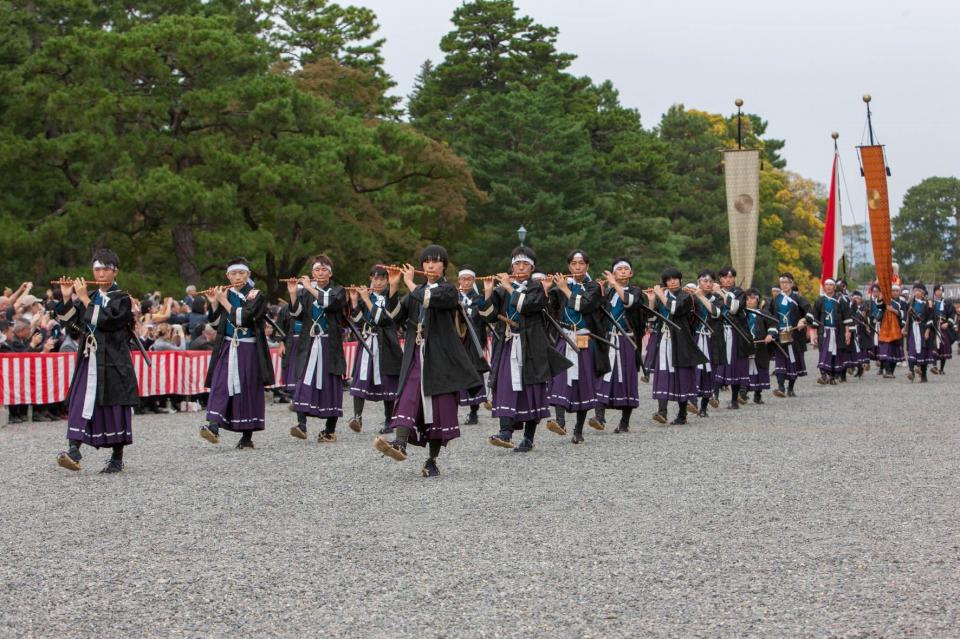
●Nijo Castle Sakura (cherry blossom) festival
Usually held in late March or early April. Cherry blossom viewing during the day and project mapping at night.
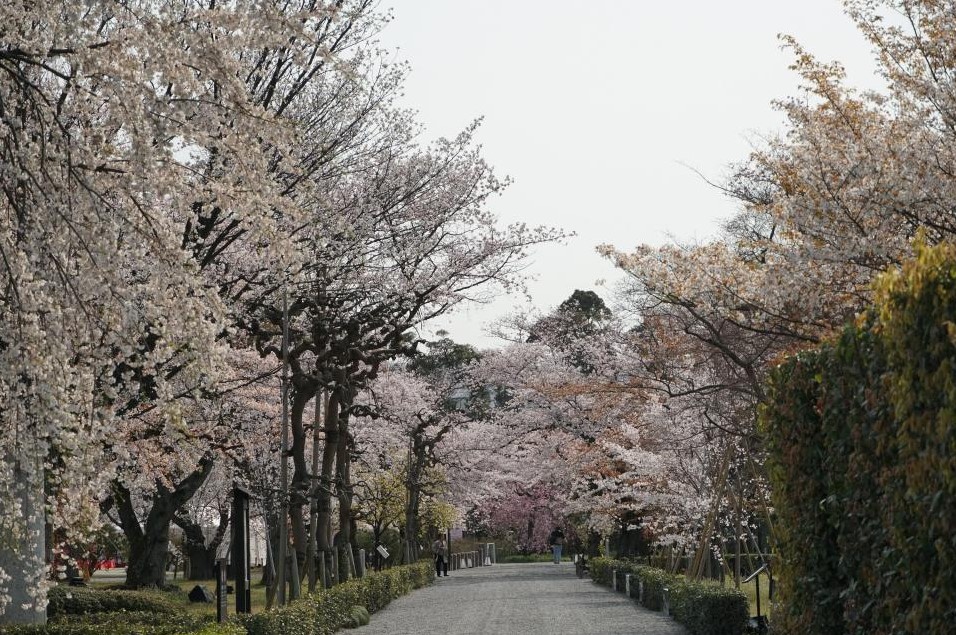
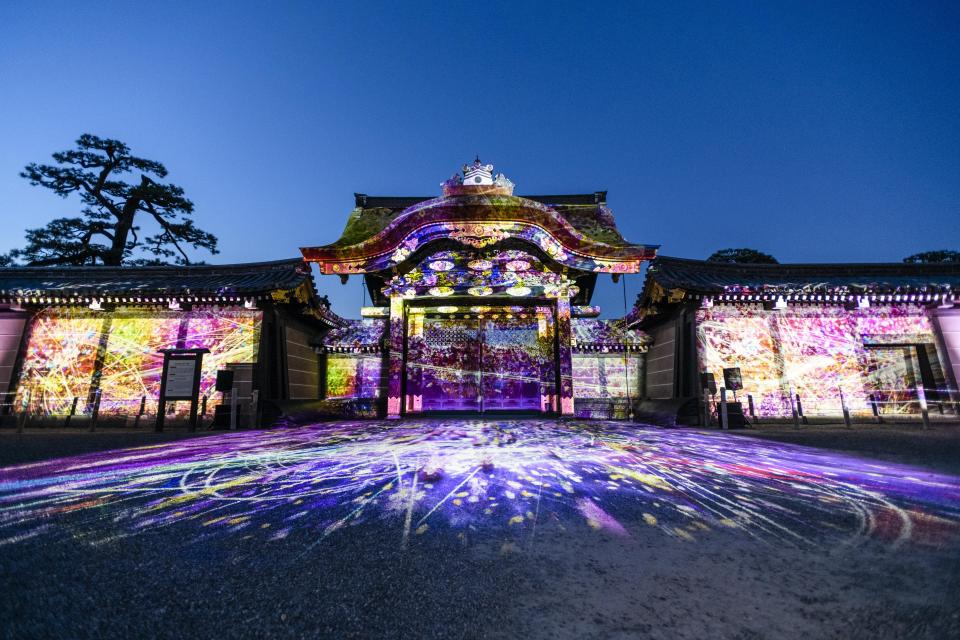 ●Nijo castle festival - Usually held around November (project mapping)
●Nijo castle festival - Usually held around November (project mapping)
Tips
Congestion Forecast Data&Live Streaming(Central)
https://global.kyoto.travel/en/comfort/central/
[Note]
*Please avoid eating while walking through Nishiki Market.
Eating food at the store at which it was purchased OR bringing it home is one of the cardinal rules of Nishiki Market.
